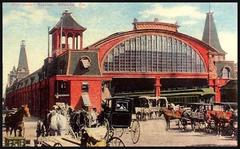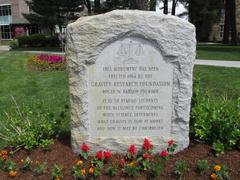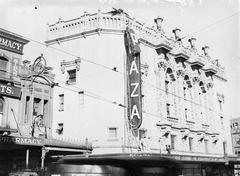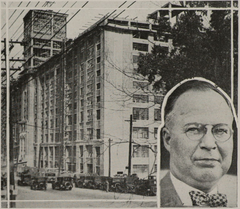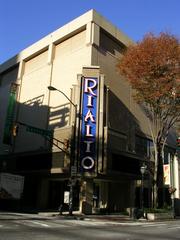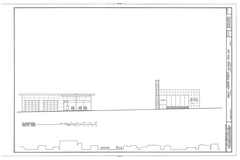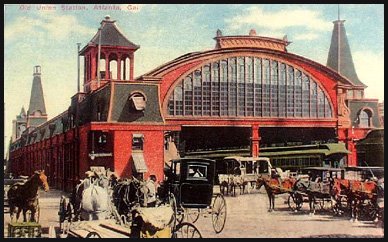
Atlanta Union Station Visiting Hours, Tickets, and Guide to Atlanta Historical Sites
Date: 15/06/2025
Introduction
Atlanta Union Station, once the city’s major passenger rail terminal, remains an enduring symbol of Atlanta’s transformation from a railway crossroads to a thriving metropolis. Established in 1853, the original station played a pivotal role in connecting the American South, supporting economic expansion, and shaping Atlanta’s cultural landscape. While the original structure was demolished in the 1970s, its legacy is preserved through active sites like Peachtree Station, the Southeastern Railway Museum, and the Five Points MARTA station, which now occupies the historic Union Station site. This comprehensive guide details the history of Atlanta Union Station, practical visiting information, and nearby attractions, ensuring visitors can fully appreciate the city’s railway heritage. For up-to-date visiting hours and ticketing, refer to Amtrak Peachtree Station Information and the Southeastern Railway Museum Official Site. Additional historical insights are available at Yesterday’s America and Worldly Known.
Table of Contents
- Introduction
- Historical Overview
- Legacy and Surviving Heritage
- Visiting Peachtree Station
- Southeastern Railway Museum
- Nearby Historical Sites and Tours
- Atlanta Union Station: Architecture, Legacy, and Urban Impact
- Visiting Atlanta Union Station Site: Location, Hours, and Tips
- FAQ
- Travel Tips
- Conclusion and Further Resources
Historical Overview
Early Foundations: Atlanta’s First Union Station (1853–1864)
Atlanta’s transportation prominence began with its first Union Station in 1853, strategically positioned at the intersection of major rail lines. This hub facilitated commerce and migration, cementing Atlanta’s role as a gateway to the South. The original structure was lost in 1864 when General Sherman ordered its destruction during the Civil War (Yesterday’s America).
Postwar Recovery and the Second Union Station (1871–1930)
Rebuilt in 1871, the second Union Station—often referred to as Union Depot—supported Atlanta’s rapid postwar growth. It reinforced the city’s identity as the “Gate City.” However, by 1930, the facility was outdated and subsequently demolished (Yesterday’s America).
The Third and Final Union Station (1930–1971)
The third Union Station, completed in 1930, featured Beaux-Arts architecture and modern amenities. It became a central hub for iconic rail routes, including the Nancy Hanks, linking Atlanta with key destinations (Yesterday’s America).
Decline and Demolition
With the rise of automobiles and air travel in the mid-20th century, passenger rail traffic dwindled. Union Station closed in 1971 and was demolished soon thereafter, effectively ending an era in Atlanta’s transportation history (Yesterday’s America; Towns and Nature).
Legacy and Surviving Heritage
While the original Union Stations are gone, Atlanta’s railway legacy is preserved through active sites and museums:
- Peachtree Station: The city’s sole active passenger rail station, serving Amtrak’s Crescent line.
- Southeastern Railway Museum: Georgia’s official transportation museum, featuring extensive exhibits and restored railcars.
Visiting Peachtree Station
- Address: 1688 Peachtree St NW, Atlanta, GA 30309
- Hours: Open daily, aligned with Amtrak Crescent train schedules. Confirm current hours on the Amtrak website.
- Tickets: Purchase online, via the Amtrak app, or at the station.
- Accessibility: The station is wheelchair accessible and offers traveler amenities.
Southeastern Railway Museum
- Address: 3595 Buford Highway, Duluth, GA 30096
- Hours: Tuesday–Saturday, 10 AM–5 PM; Sunday, 12 PM–5 PM; closed Mondays.
- Tickets: Buy at the museum or online via the official site.
- Accessibility: Fully accessible for wheelchair users.
Nearby Historical Sites and Tours
- Martin Luther King Jr. National Historical Park: Explore the life and legacy of Dr. King.
- Sweet Auburn Historic District: Renowned for its African American heritage.
- CNN Center, Georgia State Capitol, National Center for Civil and Human Rights: All within easy reach of Five Points and Peachtree Station.
Self-guided and guided walking tours of downtown Atlanta often highlight key transportation and civil rights landmarks.
Atlanta Union Station: Architecture, Legacy, and Urban Impact
Atlanta Union Station’s architectural evolution mirrored the city’s growth—from its humble 1853 beginnings to the grand Beaux-Arts structure of 1930. The station became a powerful symbol of Atlanta’s commercial and cultural ascent, transforming the Five Points neighborhood into a bustling urban center (Worldly Known). Although demolished in 1972 for MARTA expansion, its influence endures. The station’s demolition spurred a preservation movement and reshaped the city’s approach to architectural heritage.
Today, the Five Points MARTA station occupies the historic site, continuing the tradition of connecting Atlanta’s communities. The area is marked by multicultural vibrancy and is home to diverse populations, reflected in local cuisine, events, and public art (Worldly Known).
Visiting Atlanta Union Station Site: Location, Hours, and Tips
Location and Site Details
- Location: Between Spring Street and Forsyth Street, immediately west of Five Points MARTA station (Atlanta Union Station history).
- Current State: No original structures remain. The area consists of modern infrastructure, including the Five Points MARTA station and commercial buildings.
- Access: The site is publicly accessible at all times.
Practical Information
- No Admission Fees: The site is part of downtown Atlanta’s urban landscape.
- Getting There: Easily accessible via MARTA, Atlanta’s rapid transit system.
- Nearby Parking: Public lots and garages are available but can be limited.
What to Expect
No visible remains exist, but the Five Points area is a hub for exploring Atlanta’s history. For a deeper dive into the city’s railroad past, visit the Atlanta History Center or Southeastern Railway Museum.
Safety and Accessibility
- Accessibility: Sidewalks, crosswalks, and transit options make downtown accessible.
- Safety: Visit during daylight for the best experience; always be mindful of urban surroundings.
FAQ
Can I visit the original Atlanta Union Station?
No. The original station was demolished in 1972, but the site is open to the public as part of downtown Atlanta.
Are there tours of the Union Station site?
No official tours focus solely on the site, but many self-guided and guided tours of downtown Atlanta include it.
Where can I buy Amtrak tickets in Atlanta?
Purchase tickets at Peachtree Station, online, or via the Amtrak app.
What are the visiting hours for Peachtree Station and the Southeastern Railway Museum?
Peachtree Station hours align with train schedules (Amtrak Peachtree Station Information). The Southeastern Railway Museum is open Tuesday–Sunday; check their official site for details.
Are there historic markers at the site?
No dedicated markers exist, but archival materials can be found at the Atlanta History Center.
Travel Tips for Visitors
- Check hours and ticket availability in advance for Peachtree Station and the Southeastern Railway Museum.
- Use MARTA to avoid parking hassles and experience Atlanta’s public transit.
- Bring a camera for photos of downtown, street art, and historic landmarks.
- Combine visits to multiple sites for a full rail heritage experience.
- Look for special events at the museum and downtown cultural centers.
Conclusion
Atlanta’s Union Station, while physically absent, continues to shape the city’s narrative through its enduring legacy and the sites that honor its past. Visiting Peachtree Station, the Southeastern Railway Museum, and exploring the Five Points area offers a meaningful connection to Atlanta’s railroading heritage. For the most immersive experience, use digital guides like the Audiala app, participate in local tours, and stay informed through official resources.
Further Resources
- Yesterday’s America
- Worldly Known
- Train-Museum.org
- History Is Now Magazine
- Southeastern Railway Museum Official Site
- Amtrak Peachtree Station Information
For more tips and interactive guides, download the Audiala app and follow our social media channels for updates on Atlanta’s historical sites and events.
